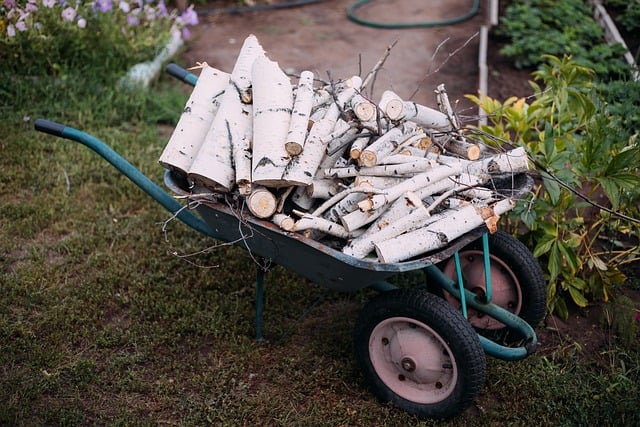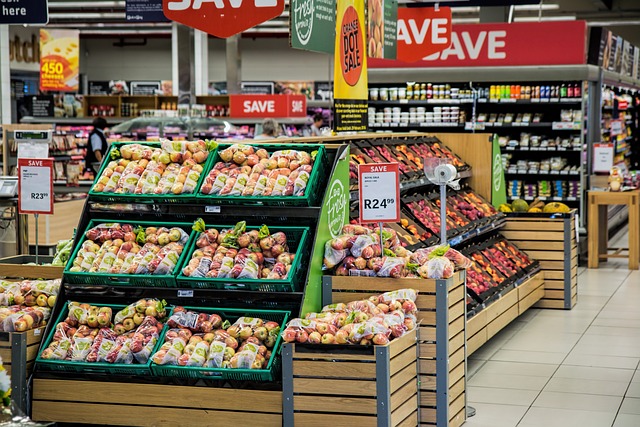Organic recycling transforms food scraps, yard waste, and plant debris into nutrient-rich compost or biomass, reducing landfill waste and lowering greenhouse gas emissions. Homeowners can contribute to environmental conservation by separating yard waste, composting suitable materials, and using local recycling programs or chipper/shredders for non-compostable items. Repurposing organic materials and household items offers eco-friendly alternatives to traditional Yard Waste Removal and Recycling practices, reducing environmental impact and saving money.
In the pursuit of creating eco-friendly homes, organic recycling plays a pivotal role in reducing environmental impact. This article delves into the world of sustainable practices, focusing on two key aspects: understanding organic recycling and its myriad benefits for green living, and providing practical guides to efficient yard waste removal and creative repurposing of organic materials right at home. By implementing these strategies, you contribute to a greener planet while enhancing your home’s ecological footprint.
- Understanding Organic Recycling and Its Benefits for Eco-Friendly Homes
- Yard Waste Removal: A Step-by-Step Guide to Implementing Sustainable Practices
- Creative Ways to Repurpose Organic Materials at Home
Understanding Organic Recycling and Its Benefits for Eco-Friendly Homes

Organic recycling is a sustainable practice that involves breaking down organic materials, such as food scraps, yard waste, and plant debris, into nutrient-rich compost or biomass. This process not only reduces the amount of waste sent to landfills but also offers numerous benefits for eco-friendly homes. By implementing organic recycling strategies, homeowners can contribute to environmental conservation efforts while enhancing their living spaces’ overall sustainability.
One of the key advantages is the diversion of yard waste from traditional disposal methods. Instead of relying on costly and environmentally harmful Yard Waste Removal practices, organic recycling allows for the transformation of garden clippings, leaves, and other organic byproducts into valuable resources. This not only reduces greenhouse gas emissions associated with waste management but also provides a rich, natural amendment for gardening and landscaping, promoting healthier plants and soil.
Yard Waste Removal: A Step-by-Step Guide to Implementing Sustainable Practices

Implementing sustainable yard waste removal practices is an integral part of creating an eco-friendly home. Here’s a step-by-step guide to help you take charge of your organic recycling. First, separate your yard waste into different categories like leaves, grass clippings, and garden trimmings. Next, compostable materials can be turned into nutrient-rich soil amendments by starting a compost pile or using a bin. This reduces the need for store-bought fertilizers. For materials that cannot be composted, explore local recycling programs specifically designed for yard waste. Many communities offer collections or drop-off sites for items like grass clippings and leaves. If these options aren’t available, consider investing in a chipper/shredder to reduce bulk and facilitate self-hauling to designated disposal sites. Regularly maintain your equipment to ensure efficient removal and minimize emissions.
Creative Ways to Repurpose Organic Materials at Home

Repurposing organic materials at home isn’t just eco-friendly; it’s an innovative way to reduce, reuse, and recycle. Instead of sending yard waste to landfills, consider turning it into nutrient-rich compost that can fertilize your garden. Leaves, grass clippings, and food scraps can all be composted, reducing the amount of organic matter ending up in garbage dumps.
Get creative with other organic materials like old cotton t-shirts, which can be transformed into cleaning rags or even pet bedding. Wooden pallets can be disassembled and reused for storage, gardening, or crafting unique home decor pieces. Even food containers and bottles can find new life as plant pots, seed starters, or storage solutions for small items. These creative approaches to yard waste removal and recycling not only cut down on environmental impact but also offer cost-effective alternatives for homeowners looking to live more sustainably.
Organic recycling is not just a sustainable practice but an essential component in creating eco-friendly homes. By understanding and implementing yard waste removal techniques, individuals can significantly contribute to reducing environmental impact. The step-by-step guide provided offers a practical approach to managing organic materials responsibly, while the creative repurposing ideas inspire home owners to think outside the box. Adopting these practices not only benefits the environment but also fosters a healthier, more sustainable lifestyle.
